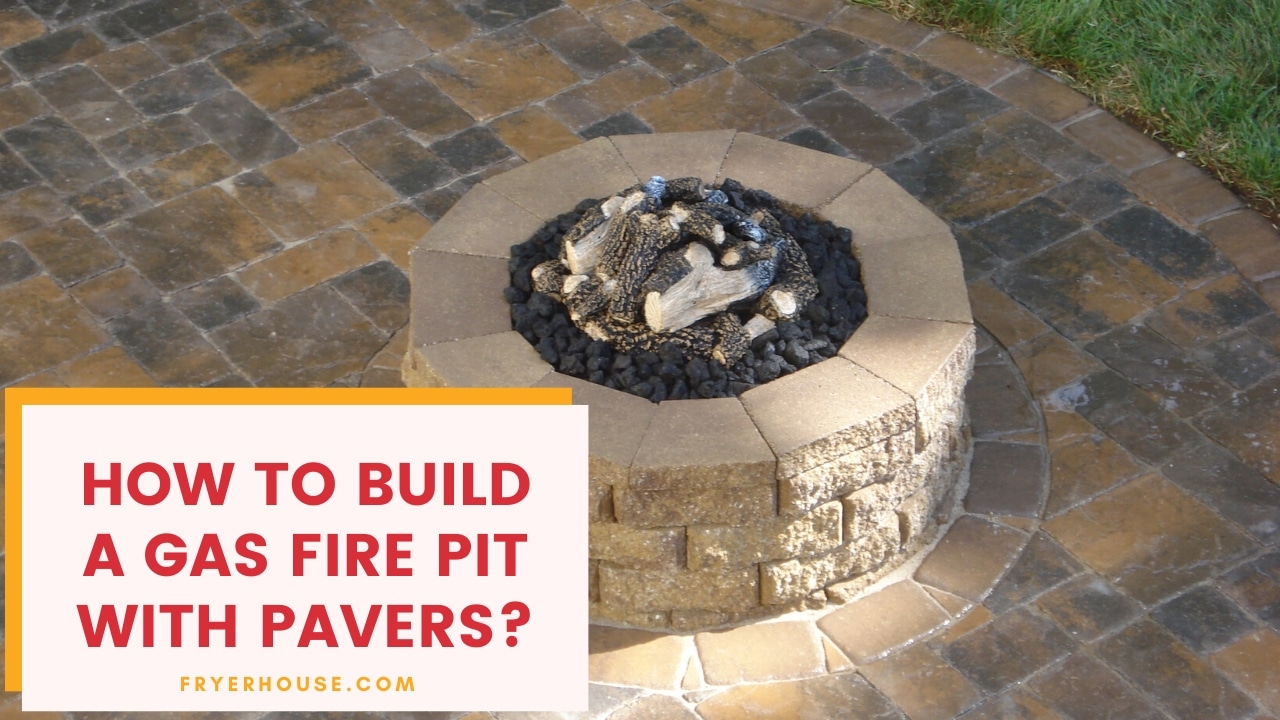
There are several ways to build your own fire pit. You can use any material you like. Some people used concrete, some other people used bricks, and we have seen people that used pavers to build their own fire pit. We discussed how to build a fire pit using bricks, and now, we want to talk about how to build a gas fire pit with pavers.
Pavers are a great material for fire pit because they can withstand intense heat for several hours, and they are good heat insulators. No matter how hot your fire pit may be, the exterior will be cool to touch, if you use pavers for it.
Apart from that, pavers are easier to arrange to make a round wall for your fire pit. Since one side is narrower than the other side, arranging them side by side will eventually form a circle.
Also, being flat will make it easier for you to arrange them in layers, depending on how many layers you want to use. It could be two layers or three layers. It is all up to you.
So, you can sit back and read the article to the end. You will be glad you did. Before we teach you how to build a gas fire pit with pavers, it is necessary to list out the advantages of concrete pavers.
Benefits of Pavers:
1. Safety:
Pavers are eco-friendly because they don’t give off any harmful fume when heated. Also, they won’t explode when fired for hours. So, they are safe and suitable for a fire pit.
2. Affordable:
Concrete pavers are affordable. They are relatively cheaper than many other fire pit materials. For instance, they are not as expensive as bricks. So, you should be able to buy as much as you need.
3. Multiple Styles and Colors:
They come in a wide variety of colors and designs. So, you’ll have a lot of options to choose from.
4. Custom Design:
If you don’t like any of the available designs, you can ask for a custom design, and it will be done. However, custom designs are usually more expensive.
5. Resistant to Harsh Weather Conditions:
Concrete pavers are resistant to harsh weather conditions. They are not affected by extreme coldness and extreme heat. Also, they are resistant to freeze-thaw conditions.
6. Durability:
Pavers can last for a very long time. This is due to their superior physical characteristics. We don’t need to remind you that any material that can withstand harsh weather conditions will last very long. Pavers can last a lifetime. In fact, experts have assured us that pavers have over 50 years of life expectancy.
7. No Cracking:
No matter how much heat you subject them to, pavers will never crack. That’s why they are able to shield your fire pit. It is four times stronger than poured concrete.
8. No Maintenance:
They require little or no maintenance. Once you install pavers, you won’t need to worry about any maintenance.
9. Easy Installation:
Pavers are very easy to arrange beside one another. You don’t have to be a professional to be able to install it. We were able to build a fire pit with pavers easily the first time we attempted it.
8 Steps on How to Build a Gas Fire Pit with Pavers?
We have broken this information down into steps. So, sit back and follow it, step by step.
Step 1:
Dig the ground for your fire pit. Create a level ground for the fire pit. It is easier to build a fire pit with pavers only if the ground is level. At this point, you must determine the diameter of the fire pit.
Step 2:
Create the site for the fire pit and measure the perimeter of the proposed fire pit. You will use the measurement to determine the number of pavers that you will need. Don’t worry, we will teach you how to calculate the number of required pavers.
Step 3:
Create a route that the gas line will pass from your main supply to your fire pit. After that, you should measure the length of the route, to know the length of the pipe that you will buy.
Step 4:
Run the pipe and fix the burner. You can also test the burner by opening the valve to light the fire pit. This is just to be sure that the pipe and burner work fine.
Before then, you should also inspect the pipe for leakages. Pour soapy water around the joints of the pipes. When you notice some bubbles, it is a sign of leakage. Make sure you fix it before you move on.
Step 5:
After quantifying the required number of pavers, you can go and buy the pavers. You can order it from Amazon, Walmart, and Homedepot. You can also get it from some offline brick and mortar stores.
Step 6:
Mix and spread some cement on the ground where you want to lay the pavers. This will make it stick properly. Now, place the first layer of the pavers.
Line them up side by side until they form a circle. Spread some cement in between them to make all the pavers stay together.
Step 7:
You can now place the second layer of pavers on the first one. When you are through, you should spread some cement on them too. Although the two layers are enough, there’s nothing wrong with adding another layer. Just follow the same steps.
Step 8:
Plaster the inner and out surface to make both surfaces smooth. And install a steel ring in the interior of the fire pit. You may also paint it if you like. That’s all.
How Many Pavers Do I Need For A Fire Pit?
There’s no straight answer to this question. The number of pavers depends on the following factors.
1. The size of the Pavers:
There are several sizes of pavers, and your chosen size will play a role in the number of pavers you will use. When you select bigger pavers, you will need a fewer number of them. On the other time, when you choose a smaller size, you will need a higher number.
2. The size of Your Fire Pit:
Another factor that determines the number of pavers is the size of your fire pit. When we say the size, we mean the height, depth, and diameter. The bigger your fire pit is, the more pavers it will need.
3. The Number of Layers:
The number of layers you want will also play a role in the number of pavers. It is needless to remind you that the more the layers, the more the pavers.
There are several sizes of pavers, but we will select the standard size for the purpose of illustration. A standard paver has a thickness of 2 ¼ inches, a width of 4 inches, and a length of 8 inches. Use a tape rule to measure the perimeter of your fire pit. Then, divide the perimeter by the width of the paver and multiply the answer by the proposed number of layers.
If the perimeter of your proposed fire pit is 100 inches and you need two layers of pavers, the number of standard pavers will be:
(100/4) x 2 = 50 pavers
If the perimeter of your proposed fire pit is 150 inches and you need three layers of pavers, the number of standard pavers will be:
(160/4) x 3 = 120 pavers
With the two illustrations, the calculation should be very clear now.
Average Cost of a Paver Patio with a Fire Pit:
Several factors play a role in the determination of the cost of a paver patio with a fire pit. The size of the patio and the size of the fire pit should be considered first. The type of pavers used will also play a role.
However, on average, it should cost you from $300 to $2,000 or more for installing a fire pit alone. In addition to that, the patio cover costs about $5,000 to $25,000. It could cost you much more if you intend to add other outdoor facilities like a kitchen and a pool.
Final Word
As a summary, if you have been reading this article from the beginning, you should have learned why pavers are a great material for a fire pit. You should have also learned the steps involved in building a gas fire pit with pavers. While outlining these steps, we also explained how to test for gas leakages.
We took the time to explain how to determine the number of pavers you need for your fire pit. And we supported the explanation with two simple illustrative calculations. To finally wrap things up, we gave the average cost of a paver patio with a fire pit.
If you can’t afford the cost at once, you can break it down into bits. You can fix your patio first, and install your fire pit later. Most importantly, we would be glad if you share all the knowledge you got from this article.
- Make These 10 Delicious Appetizers in Your Air Fryer - September 22, 2023
- How to Cook Lamb Shoulder Chops in Air Fryer? - September 13, 2023
- How to Cook Crinkle Fries in Air Fryer? - September 13, 2023
